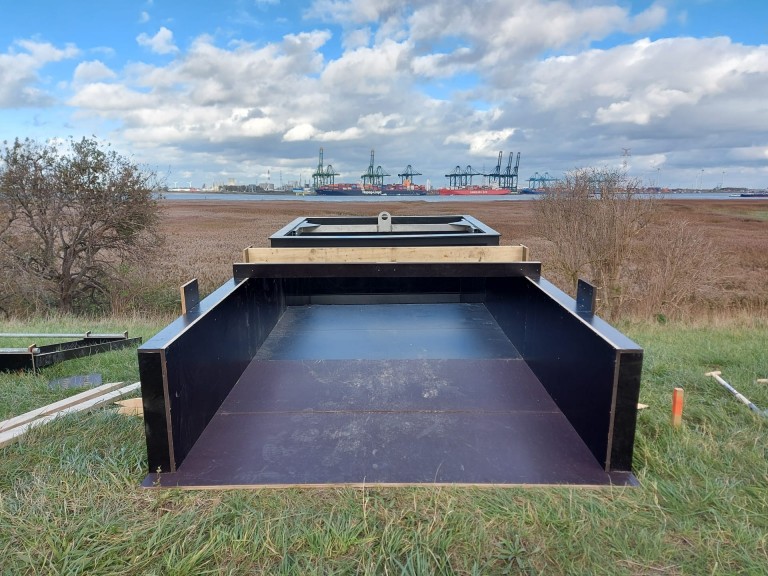How strong are our levees? Looking back on a successful first series of overflow tests
- 09 December 2020
- Francien Horrevorts
- Flood Defence
Our Living Lab Hedwige-Prosperpolder has been in full use for some time now. We have carried out various field tests in November, mainly to see how strong the levee cover is and which factors determine the strength. This was studied by carrying out overflow tests. As these tests have now been finalised, it is time to share the first results.
Overflow generator
To carry out the overflow tests, an overflow generator was installed on the river side of the levee in the Hedwige-Prosperpolder. This is a set-up that can simulate overflow of the levee with water. The water is supplied to the generator via pumps. A fixed amount of water flows down the landward slope of the levee via a demarcated test strip. The tests are carried out to determine the erosion resistance of the vegetation and cover layer. The effect of the amount of water is studied, but also of other factors such as animal activity, the type of covering and, for example, the presence of a tree.

Unique location
The unique location of the levee, on either side of the border between the Netherlands and Belgium is very interesting. The various choices in Flanders and the Netherlands regarding the design and maintenance of the levee can therefore also be examined in the study. Researchers can test the influence of differences in material, vegetation and management on levee strength. Belgium and the Netherlands have made different choices here.
"What influence do factors such as mowing frequency and the admission of fertilisation have on the strength of the cover of the levee? This provides interesting information that can be of great importance for the resilience of levees."
Patrik Peeters, MOW, project leader of the overflow tests
Various tests
The levee runs through both the Flemish Prosperpolder and the Dutch Hedwigepolder. We have carried out overflow tests in both countries on various strips of the levee. Some with anomalies such as a sheep cliff, rabbit holes or a tree near the toe of the levee. During most overflow tests, a river level of about 30 centimeter higher than the levee crest was simulated. The tests have been carried out until damage occurred on the surface (or we ran out of time 😊).
Curious what an overflow test looks like? See this vlog by Wouter Zomer, STOWA, of one of the overflow tests in the Hedwige-Prosperpolder on the 7th of November.
The first results
The first preliminary conclusion of the overflow tests is that the levee revetment in the Netherlands and Belgium is in good shape and can withstand a considerable amount of water flow. As long as the grass cover is closed without severe irregularities zones or engraving, hardly any damage is detected. However, when big holes in the grass cover are present, the damage can be considerable. In these cases there is hardly any time to respond. Further research, wave overtopping tests and a breach experiment, is planned at a later stage of the project. These experiments will provide further insight into the behaviour of the levee during extreme conditions.
Repair the damage
What’s special about the Polder2C's project is that the damage caused in the Living Lab will now be used to try out several damage repair techniques. On 14 December a first repair exercise will take place.
More news
Curious to know more about our latest results and events? See our news section.
